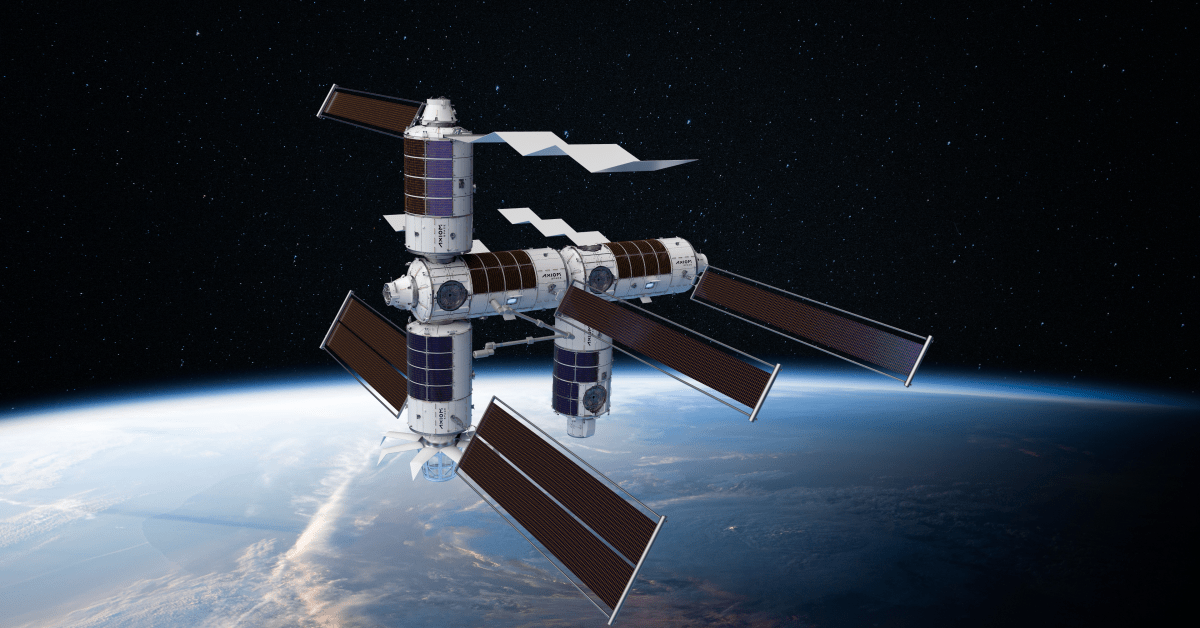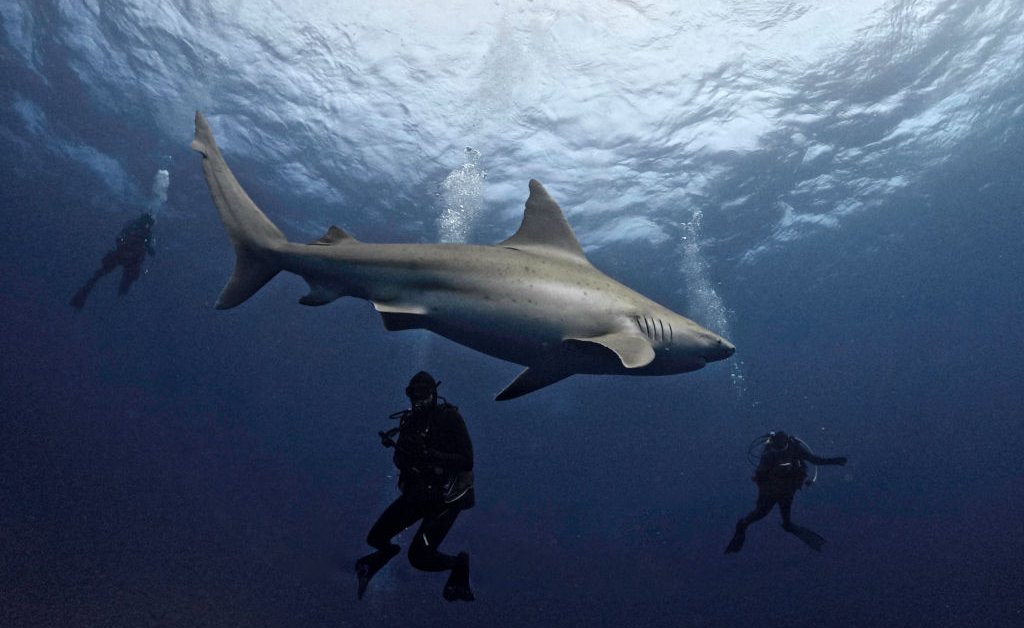America’s most expensive government housing project cost north of $100 billion, took 13 years to build, and has been continuously occupied since 2000—yet most of the time no more than six people live there. That’s because the residence in question is the International Space Station (ISS), a million-pound orbital outpost with a footprint larger than a football field and the habitable volume of a six-bedroom house, circling the Earth 250 miles overhead. Over the past 25 years, on-board astronauts have done yeoman’s work in the station’s six laboratory modules. But the ISS is getting old, and NASA and the 14 other partner nations that built, maintain, and operate it have plans to de-orbit it by 2030, sending it tumbling down through the atmosphere for a controlled splashdown in a remote patch of ocean.
Before the ISS dies, however, it will help birth its own replacement—one that will be built and launched by the private sector, with the new modules constructed by Houston-based Axiom Space, and launch services and the Dragon spacecraft provided by SpaceX. Over the past three years, Axiom has launched three private, paying crews of four astronauts to the ISS, preparatory to the commencement of station construction. On June 10 it plans to launch its fourth mission, straightforwardly dubbed Axiom Mission 4 (Ax-4)—one more milestone on the road to the first new space station module going aloft in 2027.
“It’s important for the U.S. to maintain a human presence in space, and that’s why I think the Axiom station is so important,” says former NASA astronaut and Axiom’s director of human space flight Peggy Whitson, who commanded Axiom Mission 2 (Ax-2) and will command Ax-4. “We’ve got to get the [new] station up and running before the ISS is decommissioned. That push for … expansion in space is important from a technology perspective [and] from a space power perspective.”
Speedy but significant science
Ax-4’s mission will be a relatively brief 14 days—an eyeblink compared to the six months to a year that the station’s long-term residents stay aboard. But as with the earlier Axiom flights, none of which went beyond 18 days, the crew will be performing a lot of solid science in the time they’re aloft.
“This particular mission will comprise 60 scientific studies and activities representing 31 countries, including the U.S., India, Poland, Hungary, Saudi Arabia, Nigeria, the UAE, and nations across Europe,” said Allen Flynt, Axiom’s chief of mission services, at a May 20 press conference. “This will be the most research…conducted on an Axiom space mission aboard the International Space Station to date.”
Among the experiments to be performed will be studies of the effect of microgravity on the brain—crucial information to have in the run-up to long-term missions to the moon and Mars—as well as similar investigations of how the heart and muscles adapt to space. Also on the research manifest will be studies of eye-hand coordination, and even how to manage blood glucose in space, opening the door to future travel by astronauts with insulin-dependent diabetes. Perhaps the most ambitious work, however, will involve testing various drugs to treat cancer—work that can be dramatically accelerated if it takes place in space.
“People always say, ‘Why do you go to space to look at cancer?’” says Whitson. “Well, cancer cells proliferate faster [in microgravity], so in a very short period of time you can give them a drug and see if it’s slowing them down. If you shut them off you can effectively say, ‘Hey this is a very promising drug.’” During Ax-2, the crew was specifically studying colorectal cancer. This time around they will be looking at triple-negative breast cancer—an aggressive form of the disease—and should be able to finish the study even in the short time they’ll be aloft.
Collaboration is key
The mission won’t be just about the science, but about building global partnerships that go beyond the international suite of experiments the crew will perform. Axiom Space might be a U.S. company, but Whitson will be the only American aboard when Ax-4 lifts off. Joining her will be crewmembers Shubhansa Shukla, from India; Sławosz Uznański-Wiśniewski of Poland; and Tibor Kapu of Hungary. The mission comes after a long wait for all three countries. A Hungarian has not been in space since 2009, when paying space tourist Charles Simonyi traveled to the ISS aboard a Russian Soyuz spacecraft. The last Indian citizen in space was Rakesh Sharma, who was aboard another Soyuz, which docked with Russia’s Salyut 7 space station in 1984. For Poland the wait has been longest of all, dating back to 1978, when Mirosław Hermaszewski launched aboard a Soyuz.
“Private astronaut missions are a great opportunity for our member states to fly more astronauts and do more experiments aboard the International Space Station,” said Sergio Palumberi, mission manager with the European Space Agency (ESA)—which includes Hungary and Poland—at the May 20 press conference. “ESA will be executing 17 science investigations and technological demonstrations.”
“This is more than a space mission for us,” said Orsolya Ferencz, Hungary’s ministerial commissioner of space research. “It is a strategic national effort, an expression of Hungary’s commitment to sovereignty in critical technological fields and to secure a place in the rapidly evolving space economy.”
The four new arrivals aboard Ax-4 will join an equally international crew of seven already living on the ISS; they include three astronauts from the U.S., three cosmonauts from Russia, and one astronaut from Japan—Takuya Onishi, who is currently station commander. During Axiom-4’s trips to and from space, Whitson will be in command of her three-person crew, but when they’re aboard the station, she will cede most of her authority to Onishi.
“I’m responsible for my crew and our activities on the ISS, but the crew that’s already up there will be responsible for the station as a whole,” Whitson says. “It wouldn’t be appropriate for a short-term person to take over.”
Building the next ‘ISS’
The 14-day Ax-4 mission is being flown with an eye toward a more distant goal. This flight and the previous three have been dress rehearsals both for crews and for Axiom’s onsite mission control, providing critical experience working in orbit and managing activities from the ground. That patient practice will be put to use in 2027 when the first Axiom space station module goes aloft and docks with the ISS. Over the course of the following three years, four more modules will be sent up and dock with the one already there, with the new cluster serving as a semi-autonomous space station budding from the larger existing one. In 2030, not long before the ISS is deorbited, the Axiom station will undock and become its own free-floating lab.
The first module, known as the payload, power, and thermal module (PPTM), will, as its name suggests, provide power, temperature control, and storage space for the new station. Following the PPTM will come one airlock module, two habitat modules, and a research and manufacturing module (RMF), where the onboard science will be performed. The RMF also includes a windowed enclosure similar to but much larger than the ISS’s cupola, providing 360-degree views of the Earth below and the surrounding space.
“It’s way bigger than the cupola,” says Whitson. “It’s going to be an immersive experience, where you can get your whole body inside. It will be like doing a spacewalk without having to put a spacesuit on.”
Axiom does not rule out adding more modules still down the line, especially as the company attracts private sector and government customers willing to pay to have experiments run and hardware tested in microgravity. The space community has gotten spoiled in the past 25 years, with a rotating corps of international astronauts always at work, always in orbit, making their homes aboard the ISS. The station may not attract the global excitement that the old Mercury, Gemini, and Apollo missions did, but we will surely miss it when it’s gone. Axiom Space is prepared to fill that void.








